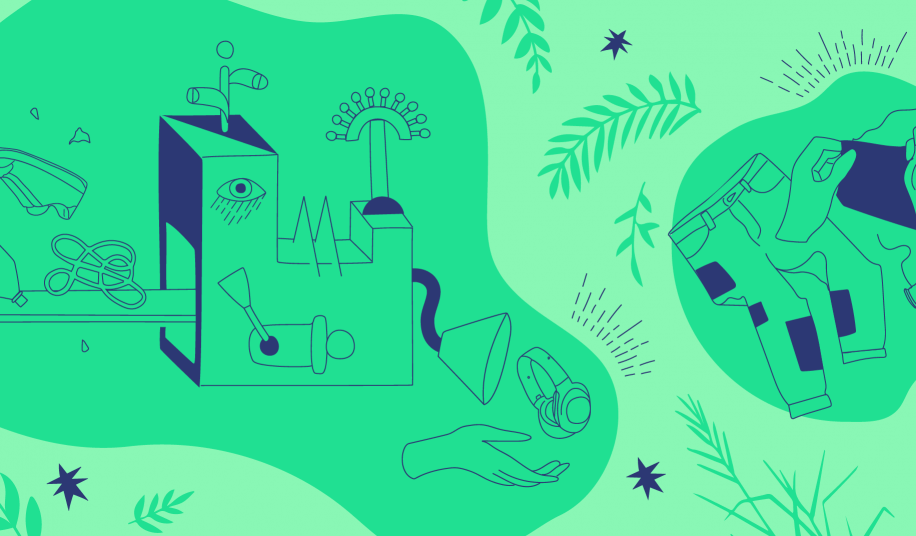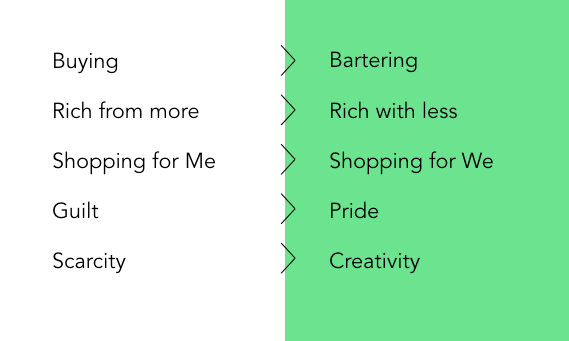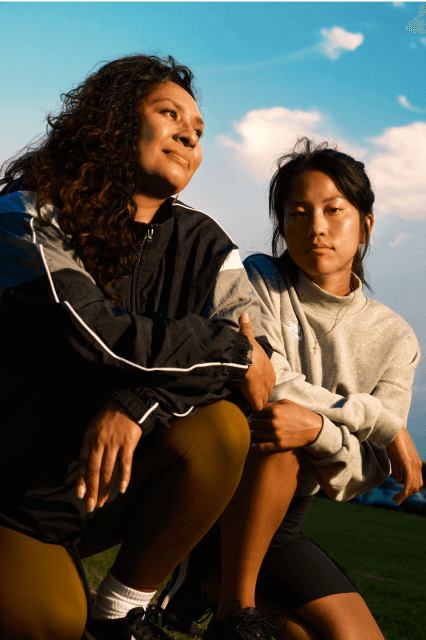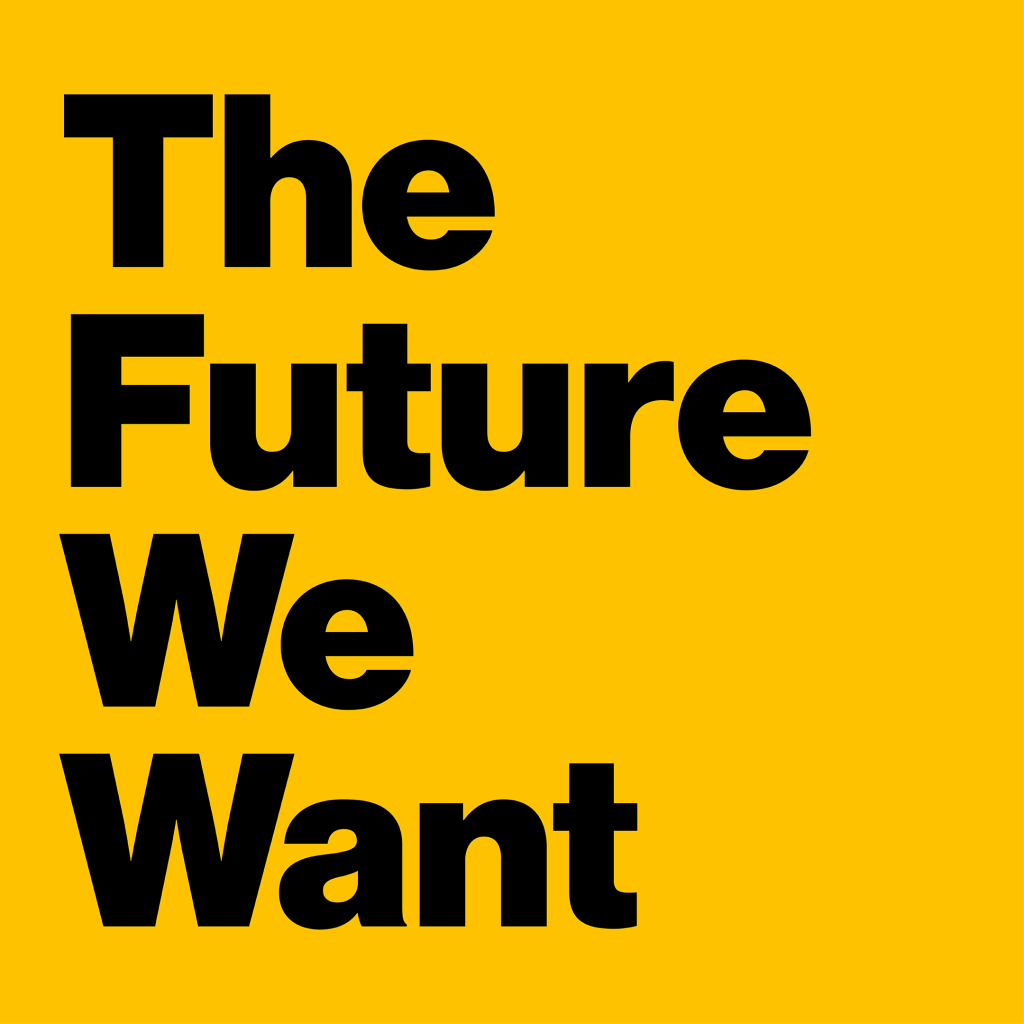2030 Vision: Circular World

Imagining a world of sustainable, regenerative living and brands that are ready for tomorrow, today
Imagine the world in 2030. We’ve exhausted our virgin, natural resources. Our mines are tapped out. Our working forests are gone. Our fossil fuel reserves are done.
Luckily, our leaders across business, government and civil society have joined together to create vast amounts of natural reserves (just in time!), so that the environment is able to regenerate at a healthy, steady rate. However, in order to thrive, these protected natural places must remain untouchable for decades, so we have to make do with what we’ve already pulled out of the ground.
In this future, imagine that we’ve opened up landfills in search of precious metals for electronics. We’ve cleaned up the Great Pacific Garbage Patch to extract precious plastic for recycling into new goods. And we’ve shifted away from a take-make-waste culture because every. single. thing. counts.
In this future, nature is flourishing because we’ve learned to leave it alone. We’ve learned how to share better. We’ve learned to live in co-housing settlements where each family has an individual dwelling but also shares resources like a community event space, pool, gym and playground.
We’ve learned that not everything needs to be new to be new to us. We’ve learned to find a home for things we no longer need – and connect with others who can benefit from these items along the way. Like a toaster. Or a sweater. We’ve learned how to build modular products where small parts can be updated easily over time.
In this world of resource limitations, humans still crave abundance, but it’s shifted meaning. Instead of an abundance of material goods, we want an abundance of time, meaningful relationships and passionate pursuits. We want an abundance of creativity, experiences and freedom.

Brands Preparing for Circular World
Across industries, geographies and generations, a new breed of brands is already designing for this circular world – where growth is decoupled from harm and we meet the needs of more people with fewer resources and less waste.
“Circularity provides a new way forward, a business model that allows for revenues to grow while decreasing reliance on new resources and reducing waste,” says Jeff Denby, Co-Founder at The Renewal Workshop. BBMG worked with The Renewal Workshop to bring to life The North Face Renewed, a brand designed for circular consumption and a life of more exploration. “If we are going to maintain a consumer-based economy and stop our assault on the environment, then transitioning to circular business models is the only way forward for smart companies intent on survival,” he says.
“I believe that we’re going to change our view of waste,” Denby adds. “I think we’re going to start seeing it as dangerous. Low impact lifestyles will be cool. A confluence of factors will drive people to strive for more meaningful products and life experiences that are not devoid of consumption but rather rooted in sustainable consumption provided to them by circular businesses. The preservation of resources will be rewarded along with products and services that permit consumption but with far less impact.”
New products with a low-impact mission that marry high design with high durability and less waste have been gaining popularity. Loop is a circular shopping and delivery service offering everyday products from brands like Pantene, REN skincare, Ariel, and Haagen Daz ice cream in premium, reusable packaging. Blueland offers a suite of household cleaners that come in stunning, reusable containers that you’ll want to display on your countertop rather than stash below the sink. What’s more, the product ships as a water-less tablet, drastically reducing the carbon impact of transportation.
For secondhand resale platform letgo, the circular economy can also inspire a shift in culture, behavior and lifestyle aspirations. “We want secondhanding to be second nature,” says Fernando Barretto, Director of Brand Marketing. “We don’t just want people to buy more – we want them to live more, both as empowered individuals and as members of a forward-thinking, eco-conscious community.”
In fact, resale and sharing economy businesses like Waze Carpool, Depop and AirBnB are already giving us a glimpse into how a world of doing more with less not only helps address our waste and resource problems, but helps repair our sense of community as well.
“Through letgo, we’ve seen strangers come together, choose kindness and feel more united,” Barretto says. “People are coming together to make sure the things they don’t need anymore are providing value to others. We’re making choices that benefit not only ourselves, but our neighbors and our planet. The sense of community and common purpose that circularity creates is remarkable.”
As brands like these help us work together to make do with the materials already available to us, there’s also influential innovators like General Mills, Danone and Patagonia who are investing in regenerative agriculture to repair and preserve our soil for many more generations of healthy farming.
And the opportunities for regeneration extend well beyond agriculture, as Dimitar Vlahov, the Director of Knowledge & Insights at Sustainable Brands, says: “There are several other essential dimensions to regeneration, including restoring the vitality and abundance of oceans, lakes, and rivers; renewal of companies’ relationships with employees, suppliers, customers, local communities and other key stakeholders; reimagining a healthier balance between material and non-material pursuits and values; cultivating systems-thinking win-win-oriented leaders who pursue the success of all stakeholders at the same time; and stepping away from prioritizing the values of extraction, exploitation, and separation – to name just a few. It’s the kind of systemic reconfiguration and transformation that definitely touches all industries.”
How to Meet Consumers on the Road to 2030
Looking forward to 2030, it’s hard to know exactly how extensively humanity will need to adapt to the increasing limitations on natural resources. But a growing number of brand leaders and consumers alike are already changing their vision, mindset and practices to meet the reality of our present era. It’s not about lowering our expectations, but about shifting our priorities.
There are strong signals that this shift is underway and a new American Dream is rising. According to The Pull Factor Project survey of 2,000 U.S. consumers by BBMG and Sustainable Brands in 2019, more than 9 in 10 respondents say that “having meaningful relationships with others” (95%), “achieving overall happiness despite life’s challenges”(95%) and “living a healthy, balanced life” (91%) are among the most important factors to living The Good Life, while traditional symbols of status and success like “owning a home” (80%) and “owning a car” (75%) are less important.
Of course, our intentions to live a more sustainable lifestyle will be easier to act on as brands provide the products and services that make it possible. We often buy things that are disposable because there isn’t a better alternative or there are not yet options available in the rental or sharing economies.
This is the design challenge of our time, and the greatest business opportunity of the next decade will be creating the circular and regenerative alternatives that make sustainable living more accessible, more rewarding and more aspirational than ever before.
People – and the planet we share – are ready for better.
To learn more about how brands can design for a circular future, download the Pull Factor Report and brand building framework here.


